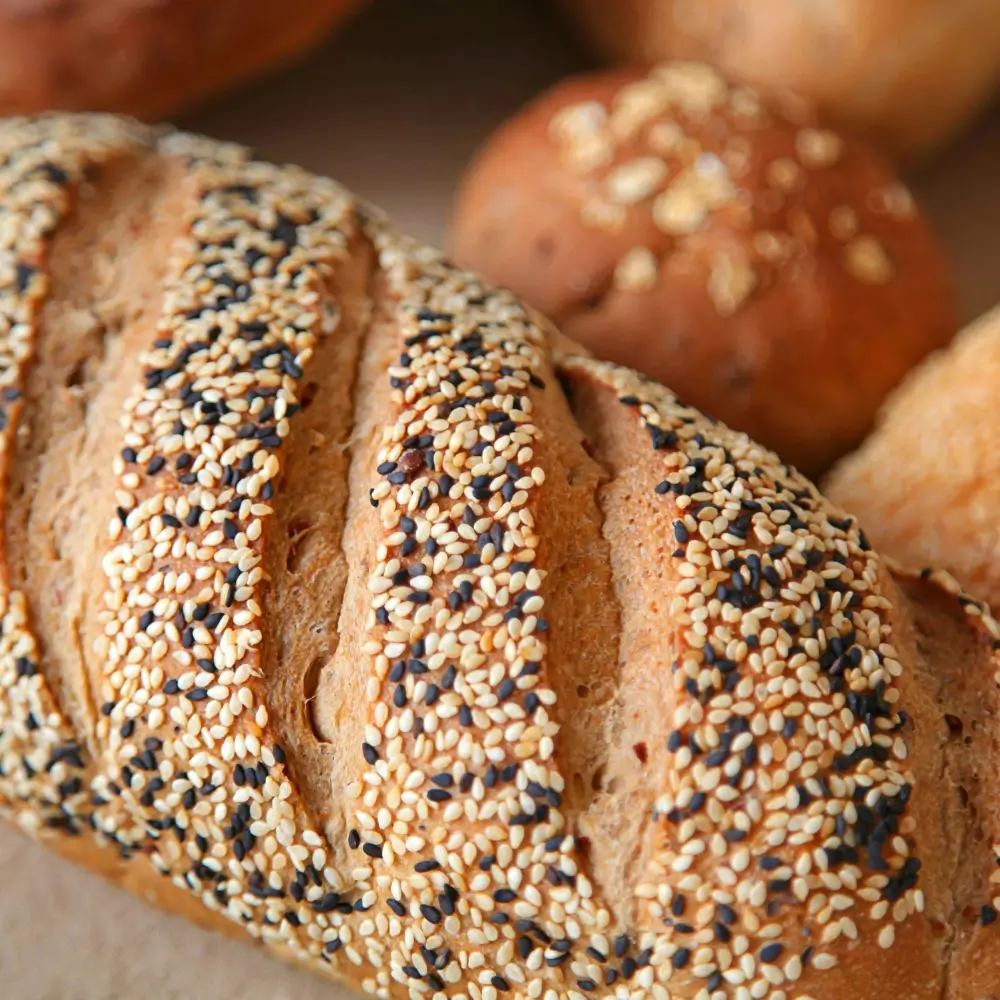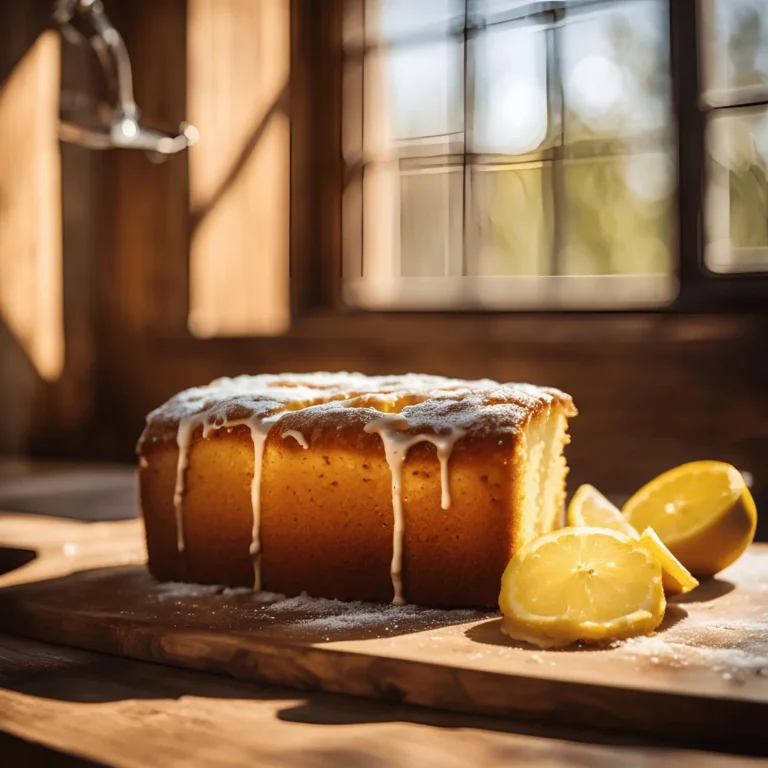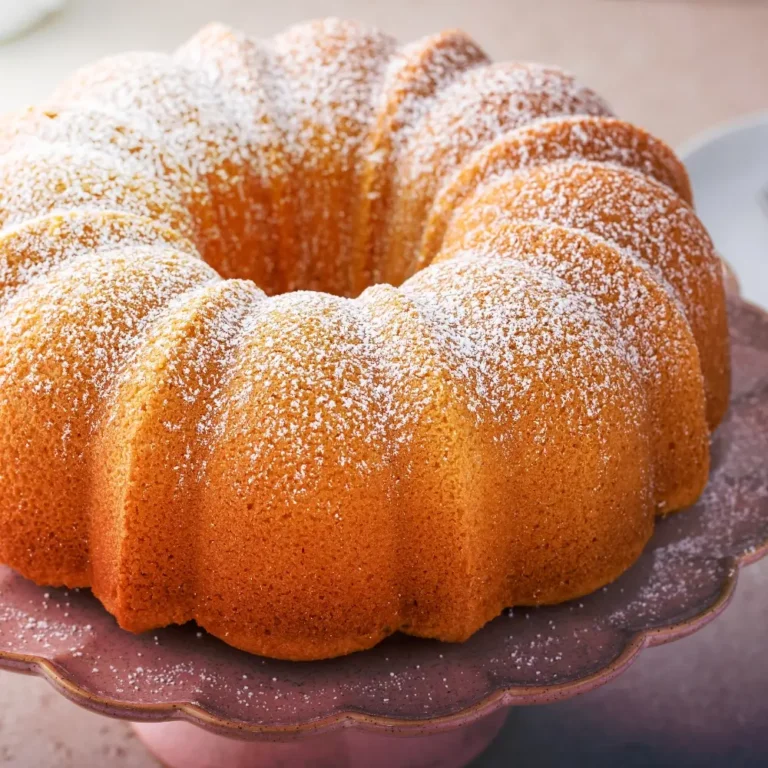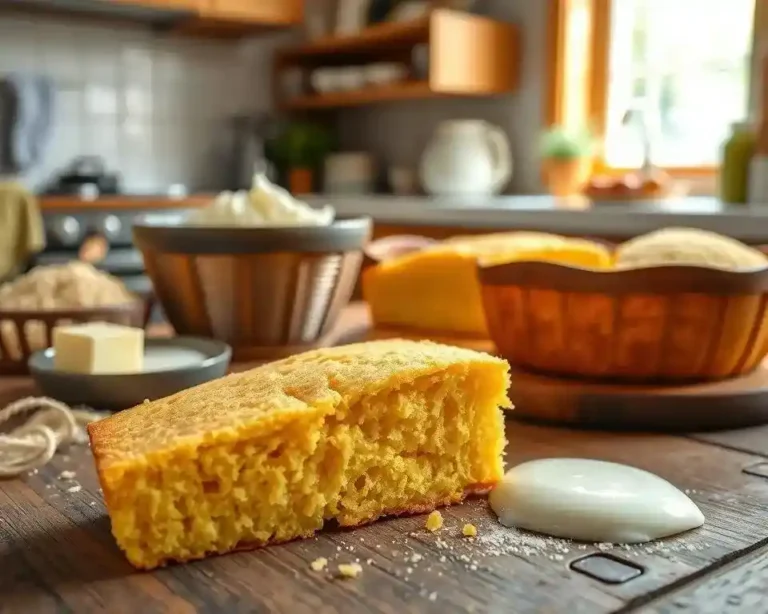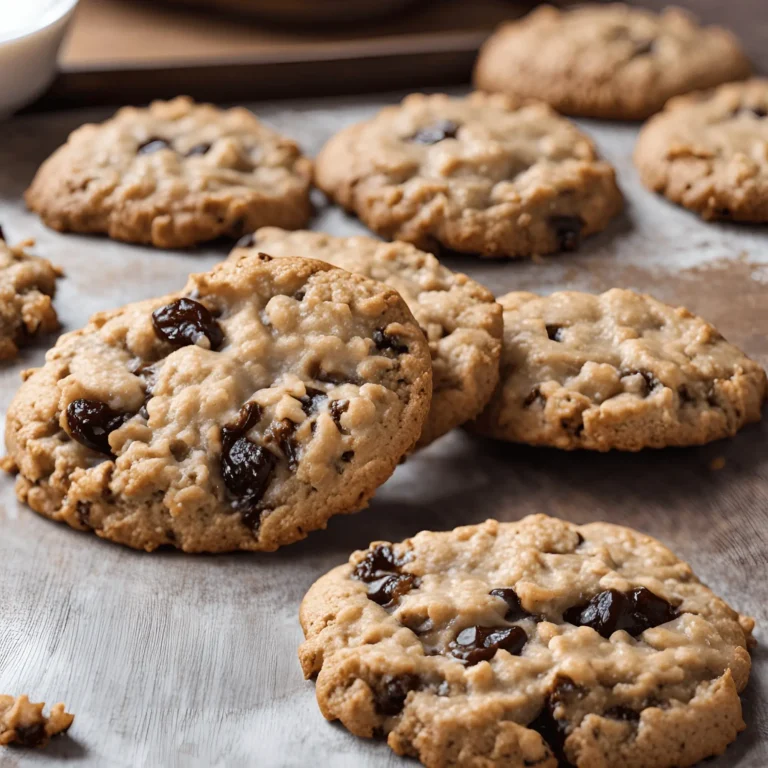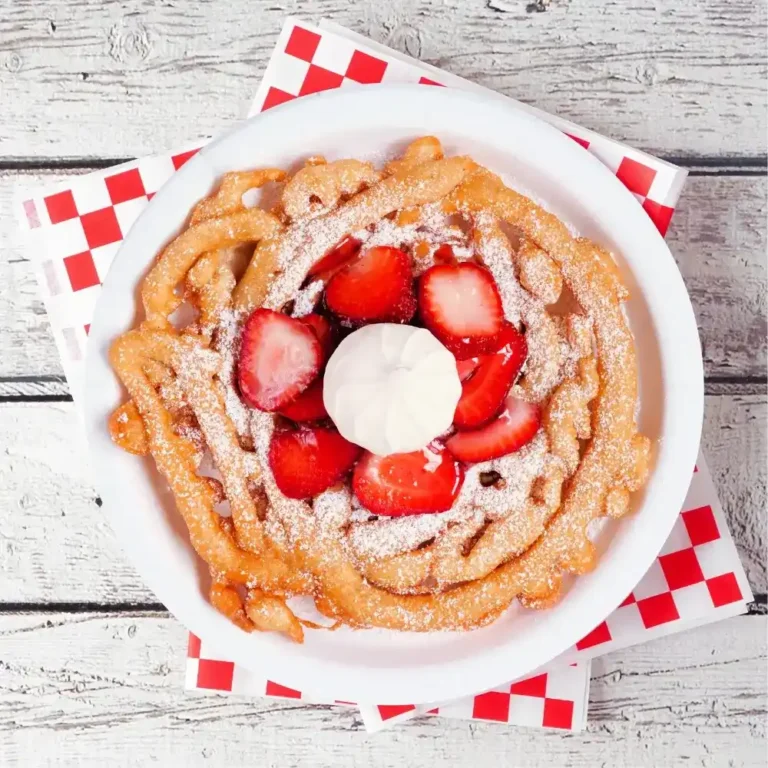Multigrain Bread Recipe
What makes a perfect multigrain bread recipe, and can you really make it at home with ease? Exploring homemade multigrain bread recipes shows the value of quality ingredients and simple steps. Making your own bread lets you control what goes into it, making it both tasty and healthy.
A great multigrain bread recipe balances flavors well. Making it at home lets you try different flours and grains for a unique taste. From mixing to baking, the process is rewarding and fun. Whether you’re new or experienced, making multigrain bread at home is simpler than you might think.
Introduction to Multigrain Bread
Starting your multigrain bread journey means learning about the importance of a good recipe. You’ll see how to mix ingredients for a tasty and healthy loaf. Making your own bread at home is fulfilling, and you can share it with loved ones.
Key Takeaways
- You can make a delicious multigrain bread recipe at home with ease
- Using high-quality ingredients is essential for a good homemade multigrain bread recipe
- Experimenting with different types of flour and grains can create a unique taste
- Making multigrain bread at home can be rewarding and fun
- A good multigrain bread recipe is all about balance and flavor
- Controlling the ingredients and process ensures a nutritious and tasty loaf
Table of Contents
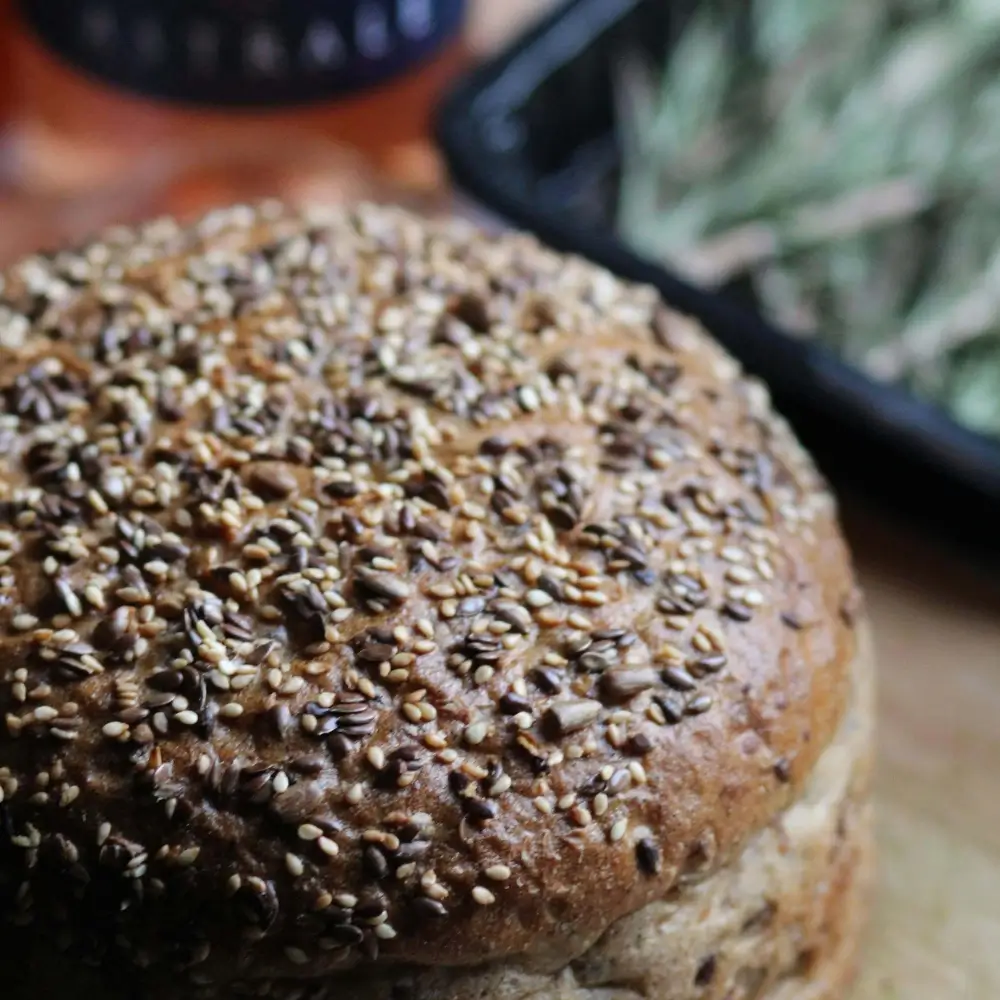
Understanding Multigrain Bread: A Nutritious Choice
Looking for a tasty and healthy recipe? Multigrain bread is a perfect choice. It combines different grains and flours. This mix includes whole grains like wheat, rye, and oats, packed with fiber, vitamins, and minerals.
To grasp what makes bread “multigrain,” examine its ingredients and making process. Multigrain bread uses various grains, such as whole wheat, white flour, rye, oats, and barley. This variety gives it a richer flavor and texture than single-grain bread.
What Makes Bread “Multigrain”
“Multigrain” means using many grains in bread-making. This includes whole grains like wheat, rye, and oats, along with refined flours. When searching for a multigrain bread recipe, make sure it lists a variety of whole grains.
Health Benefits of Different Grains
Each grain has its own health perks, making multigrain bread a smart choice. Whole wheat boosts fiber and antioxidants. Rye is rich in fiber and minerals like iron and potassium. Oats are full of soluble fiber, which can help lower cholesterol.
Comparing Multigrain vs Whole Grain Bread
Both multigrain and whole grain bread are healthy, but they differ. Whole grain bread uses just one grain, like whole wheat. Multigrain bread, on the other hand, mixes grains for a more complex taste and texture.
Essential Equipment for Baking Multigrain Bread
To bake a tasty multigrain bread, you need the right tools. The right equipment makes bread-making easier and more fun. A stand mixer is a must-have for serious bakers. It handles heavy mixing and kneading tasks with ease.
When picking a stand mixer, look at the bowl size and motor power. Make sure it can handle your multi grain bread recipe.
You’ll also need measuring cups, a digital scale, and a big mixing bowl. A dough whisk and a rubber spatula are key for scraping and folding. For exact measurements, use a digital thermometer.
Here’s a list of essential equipment you’ll need to get started:
- Stand mixer
- Measuring cups
- Digital scale
- Large mixing bowl
- Dough whisk
- Rubber spatula
- Digital thermometer
Investing in the right equipment will help you make delicious multigrain bread. With the right tools and practice, you’ll soon be a pro at making perfect multi grain bread.
| Equipment | Description |
|---|---|
| Stand Mixer | A powerful mixer for heavy mixing and kneading tasks |
| Measuring Cups | Accurate measurements for ingredients |
| Digital Scale | Precise weight measurements for ingredients |
Key Ingredients for the Perfect Multigrain Bread Recipe
To make a tasty and healthy whole grain bread, pick the right ingredients. A seeded whole grain bread needs a mix of grains and seeds for the best taste and texture. Think about the flour type, essential grains, and seeds for your recipe.
Types of Flour to Use
Whole wheat, rye, and all-purpose flour are top picks for multigrain bread. Try ancient grains like quinoa or Kamut for extra nutrition and taste.
Essential Grains and Seeds
Sunflower, pumpkin, and sesame seeds add flavor to seeded whole grain bread. Oats, barley, and millet are also key. They boost flavor, fiber, and protein.
Additional Ingredients List
Here’s what you might need for your whole grain bread:
- Salt
- Sugar
- Yeast
- Water
- Olive oil
For a great multigrain bread, use top-notch ingredients and the right mix. Try different ingredients and amounts to find your perfect seeded whole grain bread.
| Ingredient | Quantity |
|---|---|
| Whole wheat flour | 2 cups |
| Rye flour | 1 cup |
| Sunflower seeds | 1/2 cup |
Preparing Your Kitchen for Bread Making
To start making your favorite bread, like whole wheat with seeds, you need to get your kitchen ready. Clean and organize your space for a smooth process. Start by clearing countertops and washing utensils and equipment.
A tidy kitchen keeps you focused and avoids mistakes. Have all ingredients and tools within reach. For basic bread, you’ll need a bowl, cups, and a baking sheet. Whole wheat bread with seeds requires a seed grinder too.
Here are some tips for kitchen prep:
- Clean and sanitize your workspace to prevent contamination
- Organize your ingredients and equipment for easy access
- Measure ingredients in advance to save time and avoid errors
- Preheat your oven to the right temperature for your recipe
By following these steps, you’re on your way to making tasty homemade bread. Always use a reliable recipe for the best results.
| Ingredient | Quantity |
|---|---|
| Whole wheat flour | 2 cups |
| Seeds (such as sunflower or pumpkin) | 1/2 cup |
| Yeasts | 1 teaspoon |
| Salt | 1 teaspoon |
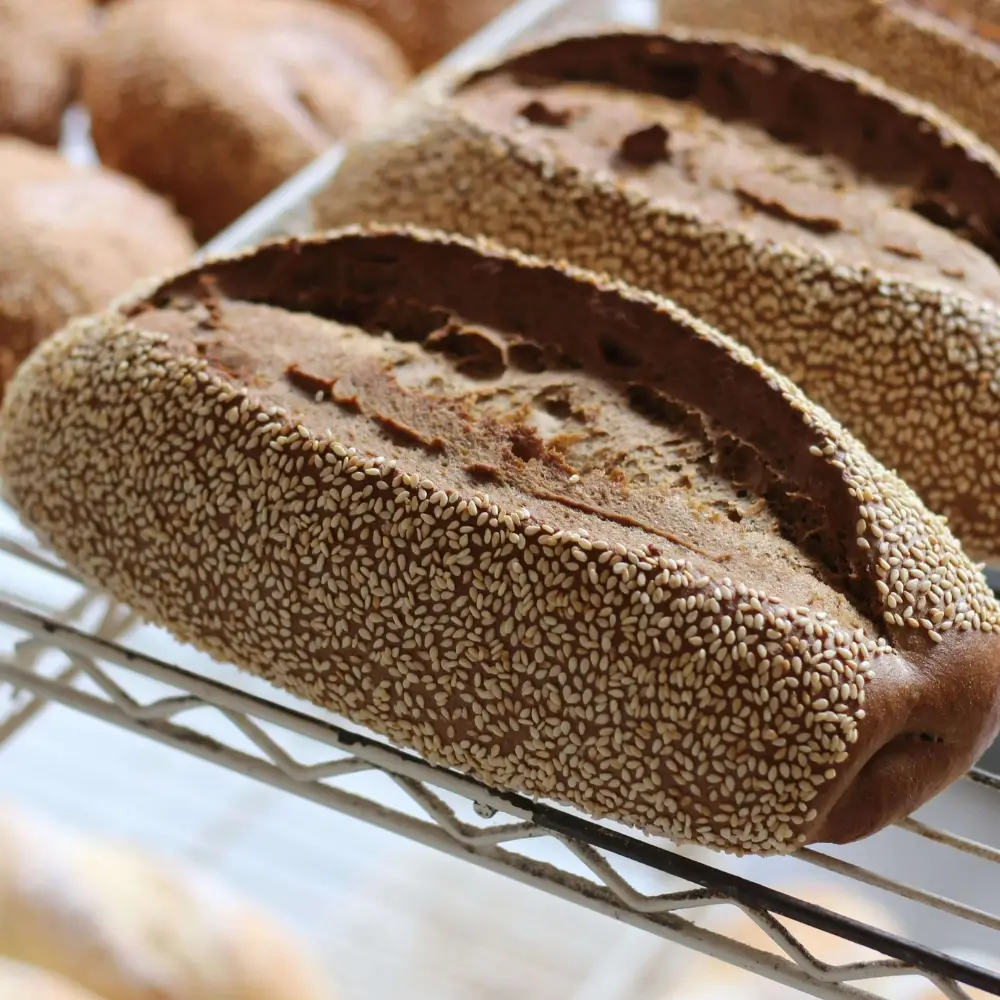
Step-by-Step Multigrain Bread Instructions
To make a tasty homemade multigrain bread, follow these steps. Start by mixing the ingredients. This includes flour, yeast, salt, and various grains. This step is key to making a dough that will rise well.
When making multigrain bread, using the right techniques is crucial. It helps achieve the perfect texture and flavor.
Mixing the Ingredients
Mixing is the first step in making your homemade multigrain bread. Combine all the dry ingredients, like different types of flour, in a large bowl. Then, add the wet ingredients, such as water, yeast, and salt, to the dry ingredients.
Mix until a shaggy dough forms. This is the start of your bread’s journey.
Kneading Techniques
Kneading is a key step in developing the dough’s gluten. This gives your bread its structure and texture. You can use a stand mixer with a dough hook attachment or knead by hand for about 10 minutes.
Keep kneading until the dough becomes smooth and elastic. This step is important for a great bread.
Proofing Guidelines
After kneading, put the dough in a greased bowl. Cover it with a damp cloth and let it rise in a warm, draft-free place. This process can take about an hour, depending on the temperature and yeast type.
Once the dough has doubled in size, it’s ready to be shaped and baked. This will result in a delicious homemade multigrain bread.
The Art of Shaping Your Bread
Shaping your bread is key when making multigrain bread recipes. A well-shaped loaf can lead to a crispy crust and a soft inside. It’s important to learn how to shape your bread right. You can fold, roll, or coil your dough, depending on the bread type and recipe.
Here are some tips to help you shape your bread like a pro:
- Use a gentle touch: Handle the dough gently to avoid over-working it, which can lead to a dense loaf.
- Use the right tools: Invest in a bench scraper, a dough whisk, and a baking peel to help you shape and transfer your bread.
- Experiment with different shapes: Try making a round, oblong, or baguette-shaped loaf to add some variety to your multigrain bread recipes.
Mastering bread shaping can lead to a variety of tasty multigrain bread recipes. Whether you’re new to baking or have experience, shaping your bread is a skill worth learning. With practice, you’ll make beautiful, crusty loaves for any event.
| Bread Shape | Description |
|---|---|
| Round | Perfect for sandwiches and toast |
| Oblong | Great for serving with soups or stews |
| Baguette | Classic French shape, perfect for dipping in olive oil |
Baking Temperature and Timing Tips
When baking a delicious bread multigrain recipe, temperature and timing are key. You want a crispy crust and a soft inside. Keeping an eye on the bread’s progress is crucial.
Start by preheating your oven to the right temperature. For most recipes, 375°F (190°C) is best. But, this can change based on the recipe and your oven.
Optimal Oven Settings
To bake the bread perfectly, consider the oven settings. The temperature and baking time are important. Bake for 30-40 minutes, or until it’s golden and sounds hollow when tapped.
Visual Cues for Doneness
There are visual signs to check if your bread is done. Look for:
- A golden brown crust
- A soft and springy interior
- A hollow sound when tapped on the bottom
By following these tips, you can make a delicious multi grain bread. It’s perfect for any occasion.
| Temperature | Baking Time | Visual Cues |
|---|---|---|
| 375°F (190°C) | 30-40 minutes | Golden brown crust, soft interior, hollow sound |
Common Mistakes to Avoid
When making whole grain bread, it’s easy to miss important steps. To make sure your seeded whole grain bread is tasty and healthy, avoid these common mistakes.
Don’t overmix the dough. This can make your bread dense and tough. Just mix the ingredients until they form a shaggy mass. Then, let the dough rest and rise.
Using the right ingredients is key. Choose high-quality whole grain flour. Add seeds or nuts for extra texture and nutrition.
- Not following the recipe: Stick to the instructions and ingredient ratios for the best results.
- Not letting the dough rise long enough: Give your dough plenty of time to rise and develop flavor.
- Overbaking: Keep an eye on your bread as it bakes, and remove it from the oven when it’s golden brown and sounds hollow when tapped.
Avoiding these mistakes will help you make delicious and nutritious whole grain bread. It’s great for sandwiches, toast, or just snacking. With practice and patience, you’ll become a pro at making seeded whole grain bread.
| Mistake | Solution |
|---|---|
| Overmixing the dough | Mix ingredients just until they come together, then let the dough rest |
| Not following the recipe | Stick to the instructions and ingredient ratios |
| Overbaking | Keep an eye on the bread and remove it from the oven when it’s golden brown |
Customizing Your Multigrain Bread
Once you get the hang of your favorite bread recipe, it’s time to try new things. You can add sunflower or pumpkin seeds to your whole wheat bread. This will make it taste and feel different.
Want to add a bit of sweetness? Try using honey or maple syrup. You can also mix in different flours like oat or rye. This will give your bread a unique taste.
Gluten-Free Adaptations
If you can’t eat gluten, don’t worry. You can still make delicious multigrain bread. Just swap out gluten flours for almond or coconut flour. Add xanthan gum to help it hold together.
Here are some tips for making your multigrain bread special:
- Start with a basic recipe and then try new ingredients and methods
- Add different seeds or nuts to your bread for extra texture and taste
- Use honey or maple syrup to sweeten your bread
| Ingredient | Quantity | Purpose |
|---|---|---|
| Sunflower seeds | 1/4 cup | Added texture and flavor |
| Honey | 2 tablespoons | Sweetener |
| Xanthan gum | 1 teaspoon | Gluten-free adaptation |
Storing and Freezing Your Bread
To keep your homemade multigrain bread fresh, proper storage is key. You can keep it at room temperature for up to 3 days. But, freezing is best if you won’t eat it in that time. Wrap your bread tightly in plastic or foil to avoid freezer burn.
Here are some tips for storing and freezing your multigrain bread recipe:
- Store bread at room temperature in a cool, dry place
- Freeze bread for up to 3 months
- Thaw frozen bread at room temperature or reheat it in the oven
When you’re ready to eat your frozen bread, thaw it at room temperature or reheat it in the oven. Toasting or grilling your bread can also make it crispy. These tips help you enjoy your homemade multigrain bread for longer, keeping it fresh and flavorful.
| Storage Method | Shelf Life |
|---|---|
| Room Temperature | Up to 3 days |
| Refrigerator | Up to 5 days |
| Freezer | Up to 3 months |
Proper storage and freezing keep your homemade multigrain bread fresh and tasty. Enjoy it whenever you like, with its perfect texture and flavor.
Serving Suggestions and Pairings
Now that you’ve mastered making delicious multigrain bread, it’s time to explore serving and pairing options. A great multigrain bread recipe can be used in many dishes, from breakfast to dinner. Start your day with a nutritious breakfast, featuring your freshly baked multigrain bread as the main attraction.
Some ideas for breakfast include:
- Avocado toast with scrambled eggs and cherry tomatoes
- French toast made with multigrain bread and topped with fresh berries and maple syrup
- Breakfast sandwiches featuring multigrain bread as the base
When it comes to sandwiches, the possibilities are endless. Use your multigrain bread to make delicious sandwiches, such as:
- Grilled cheese with sliced meats and vegetables
- Chicken or tuna salad sandwiches with lettuce and tomato
- Veggie sandwiches with hummus and sprouts
Remember, the key to enjoying your homemade multigrain bread is to experiment. Try new recipes and pairings to find your favorite ways to enjoy your freshly baked loaf.
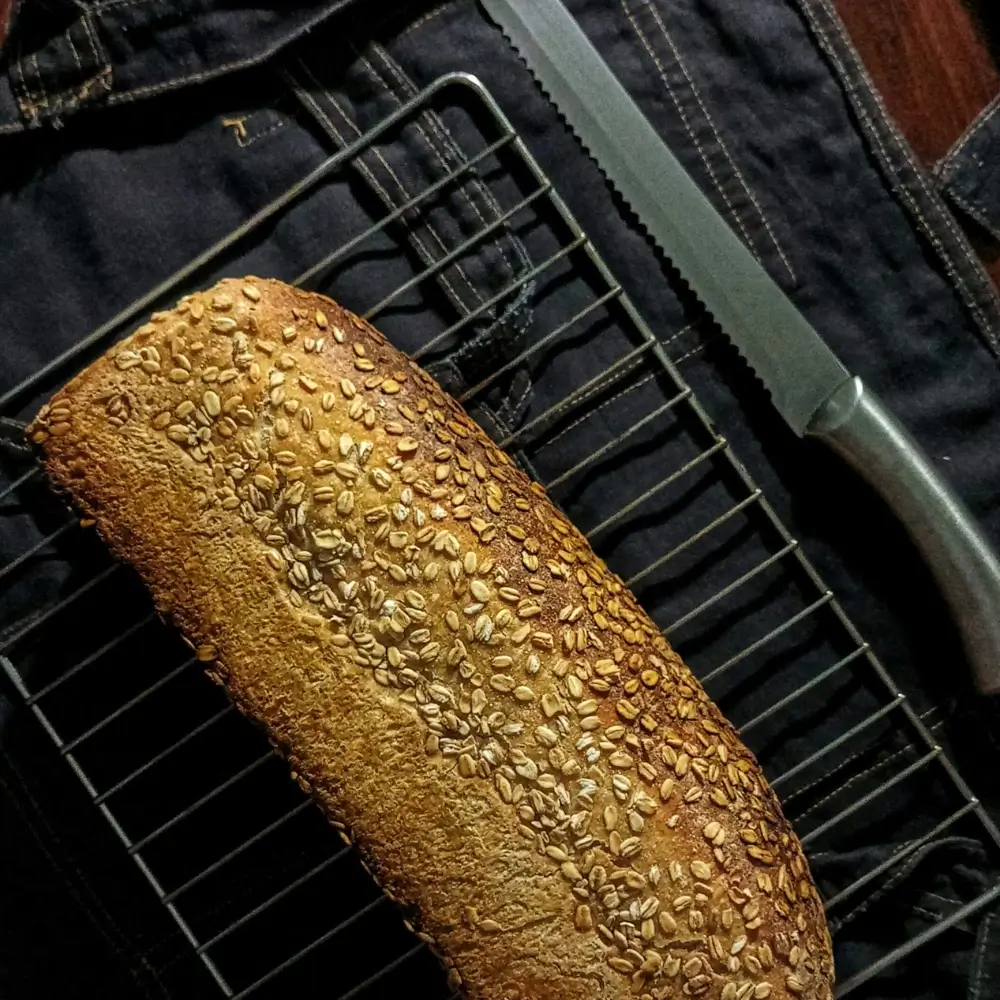
Troubleshooting Your Bread
When you make a bread multigrain recipe, you might face some problems. Let’s look at common issues and how to fix them. You can make your multi grain bread better by adjusting the recipe.
Remember, making bread is an art that takes practice. Don’t get discouraged if your first loaves don’t turn out right. Use these chances to learn and get better at making bread.
Some common bread problems include:
- Overmixing the dough, which can make it dense or tough
- Not proofing enough, leading to a flat or soggy loaf
- Wrong oven temperature or timing, affecting texture and taste
To solve these issues, try changing your bread multigrain recipe. You can adjust ingredient ratios, proofing time, or oven temperatures. With practice and trying new things, you’ll make delicious homemade bread.
| Common Issue | Solution |
|---|---|
| Dense or tough crumb | Reduce mixing time, increase liquid content |
| Flat or soggy loaf | Increase proofing time, adjust oven temperature |
| Incorrect texture or flavor | Experiment with different ingredients, adjust oven timing |
By following these tips and experimenting, you can make a tasty bread multigrain recipe. Stay patient and keep trying new things. Adjust your multi grain bread recipe as needed.
Making Ahead and Meal Planning
Planning your bread-making schedule is key to always having fresh bread. Batch baking with a whole grain bread recipe saves time and effort. This way, you can make several loaves at once and freeze them for later. Seeded whole grain bread freezes well and thaws easily when needed.
Think about how to use your freshly baked bread in your meals. It’s great for sandwiches, toast, or as a side dish. Having homemade bread on hand helps you stick to your meal plan and choose healthier options.
Batch Baking Tips
- Double or triple your favorite whole grain bread recipe to make multiple loaves at once.
- Consider using a stand mixer with a large capacity to handle bigger batches of dough.
- Invest in a few extra loaf pans to make baking and storing your bread more efficient.
Freezer-Friendly Methods
To freeze your bread, cool the loaves and put them in a freezer-safe bag or wrap them tightly. When you’re ready, thaw at room temperature or reheat in the oven. With some planning, you can enjoy fresh whole grain bread, including seeded, whenever you like.
| Bread Type | Freezer Life | Reheating Instructions |
|---|---|---|
| Whole Grain Bread | 2-3 months | Thaw at room temperature or reheat in the oven at 350°F (180°C) for 10-15 minutes. |
| Seeded Whole Grain Bread | 2-3 months | Thaw at room temperature or reheat in the oven at 350°F (180°C) for 10-15 minutes. |
Conclusion: Mastering Your Multigrain Bread Journey
Remember, practice is key when making multigrain bread. Try different flours and seeds to improve your skills. Each try will make you more comfortable with making bread, leading to better results.
Start with a basic recipe and then mix in new ingredients. Add different seeds or nuts for extra texture and nutrition. The fun part is being creative with your bread.
Follow the tips in this article to make tasty multigrain bread. Keep trying new things and enjoy the process. Soon, you’ll be making delicious bread that will impress everyone.
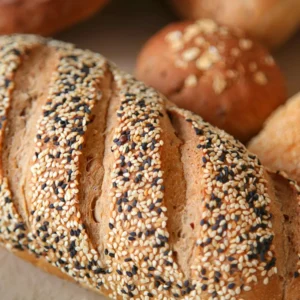
Multigrain Bread Recipe
Ingredients
- 400 grams Whole Wheat Flour
- 100 grams Rolled Oats
- 50 grams Sunflower Seeds
- 50 grams Flaxseeds
- 10 grams Salt
- 10 grams Active Dry Yeast
- 300 ml Warm Water
- 30 ml Honey or Maple Syrup (optional)
- 30 ml Olive Oil
Instructions
- Mix the Dry Ingredients: In a large mixing bowl, combine the whole wheat flour, all-purpose flour, your chosen seeds (such as sunflower and flaxseeds), and salt. Use a whisk or spoon to evenly distribute the seeds and salt throughout the flour. This step is crucial to ensure a consistent flavor and texture in every bite.
- Activate the Yeast and Combine Wet Ingredients: In a separate small bowl or measuring cup, mix warm water, active dry yeast, and honey (or maple syrup if you prefer). Let the mixture sit for about 5-10 minutes until it becomes foamy. This foam indicates that the yeast is activated and ready to help your dough rise. Once activated, pour the yeast mixture into the bowl with the dry ingredients and mix until a rough dough forms. You can use a wooden spoon or spatula for this step.
- Knead the Dough: Transfer the dough to a clean, lightly floured surface and knead it for about 8-10 minutes until it becomes smooth and elastic. Kneading develops the gluten in the dough, which is essential for a good structure and texture. If the dough feels too sticky, sprinkle a little more flour, but avoid adding too much to keep the bread moist. Once kneaded, shape the dough into a ball.
- First Rise: Place the dough ball into a lightly greased bowl and cover it with plastic wrap or a damp cloth. Allow the dough to rise in a warm, draft-free spot for 1 to 2 hours, or until it doubles in size. This step allows the yeast to ferment and create air pockets that will make the bread light and fluffy.
- Shape the Dough: Once the dough has risen, punch it down gently to release excess air. Shape the dough into a loaf by flattening it into a rectangle and rolling it tightly from one end to the other. Pinch the seam to seal and place the shaped dough into a greased 9×5-inch loaf pan. Cover it again with plastic wrap or a damp cloth and let it rise for another 30-45 minutes until it puffs up and fills the pan.
- Bake the Bread: Preheat your oven to 190°C (375°F). Once the dough has risen for the second time, bake it in the preheated oven for 30-35 minutes or until the top is golden brown and the loaf sounds hollow when tapped. For extra assurance, you can check the internal temperature with a thermometer; it should read 93°C (200°F).
FAQ:
Is homemade multigrain bread healthy?
Yes, homemade multigrain bread is a healthy choice. Packed with whole grains like wheat, oats, and rye, as well as seeds such as flax and sunflower, it provides essential nutrients like fiber, vitamins, and minerals. This makes multigrain bread a great addition to a balanced diet, supporting heart health and digestion.
What flour is multigrain bread made of?
Multigrain bread is typically made with a combination of whole wheat flour and all-purpose flour. The whole wheat flour adds fiber and nutrients, while the all-purpose flour helps provide structure and a lighter texture. Some recipes may also incorporate other flours, like rye or oat flour, to enhance the flavor and nutritional profile of the bread.
Is multigrain bread actually healthy?
A Multigrain Bread Recipe can be very healthy if it includes whole grains like oats, barley, and quinoa. Whole grains provide fiber, vitamins, and minerals, making the bread more nutritious than refined white bread.
What is multigrain bread made of?
A Multigrain Bread Recipe typically includes a mix of flours and grains like wheat, oats, barley, flaxseeds, and sunflower seeds. This combination creates a hearty, flavorful loaf packed with nutrients.
What are the ingredients in multigrain flour?
Multigrain flour used in a Multigrain Bread Recipe is made from a blend of grains such as wheat, rye, oats, and millet. The mix varies but often includes whole grains for added nutrition.
Is it OK to have multigrain bread everyday?
Yes, eating multigrain bread daily can be part of a balanced diet, especially if your Multigrain Bread Recipe uses whole grains. It provides sustained energy, fiber, and essential nutrients for overall health.
Does multigrain bread turn into sugar?
All carbohydrates, including those in a Multigrain Bread Recipe, break down into sugar during digestion. However, whole grains in multigrain bread have a lower glycemic index, leading to slower sugar release compared to refined bread.
